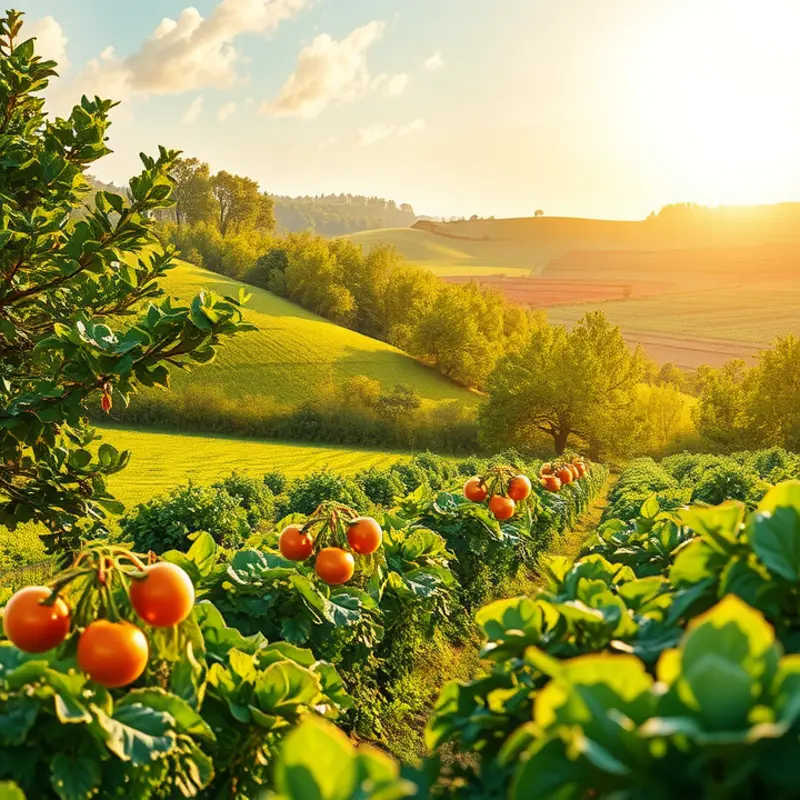Efficient food storage is essential for reducing waste and optimizing freshness at home. With the right techniques, you can prolong the life of your food, maintain its quality, and contribute to a more sustainable lifestyle. This guide offers actionable tips for managing your pantry and refrigerator effectively, ensuring you make the most of your groceries while minimizing environmental impact.
Mastering the Basics of Food Storage

Learning the art of food storage can drastically cut waste and boost freshness. Proper storage hinges on understanding the unique needs of different food types. Not all foods thrive under the same conditions, so tailoring storage techniques to each category is key.
Fruits and Vegetables
Fruits and vegetables are diverse in their storage requirements. Certain vegetables like potatoes and onions prefer cool, dark places but should never be refrigerated. Conversely, items like leafy greens last longer in the refrigerator. To extend the life of greens, wash them, wrap them in a paper towel, and store in a perforated plastic bag. Ethylene-sensitive fruits, such as strawberries, stay fresh longer when kept cold but separate from bananas and avocados, which emit more ethylene gas.
To reduce waste and maximize freshness, be strategic with produce arrangements. Store fruits like apples in the crisper drawer to control humidity. Remember, not all produce pairs well. Keep tomatoes at room temperature until they ripen and only refrigerate if necessary to slow spoilage.
Grains and Pantry Staples
Grains, flour, and other pantry staples thrive in a cool, dry environment. Use airtight containers to protect these items from pests and moisture. Whole grains, like brown rice, have natural oils that can turn rancid. Keep these in the refrigerator or freezer for longer shelf life.
Regularly rotate your stock. Place older items in the front of your pantry or cupboard, and new purchases behind them. This practice ensures that you use up your older supplies first, reducing the chance of spoilage.
Dairy and Leftovers
Dairy products, including milk and cheese, should always be stored in the main body of the refrigerator, not in the door where temperatures fluctuate. Cheese, in particular, benefits from being wrapped in wax paper. This allows the cheese to breathe and maintain its quality longer.
When it comes to leftovers, your best friend is an airtight container. Store these in the fridge within two hours after cooking. Label them with the date to avoid any guessing games later. Consuming leftovers within two to four days ensures safety and flavor.
Avoid overcrowding your fridge. Air circulation is vital, so give your food room to breathe. Plan meals around items that are nearing their expiry to minimize waste and maximize efficiency. If you’re looking for inspiration with leftover vegetables, consider whipping up a batch of Zucchini Noodles with Avocado Pesto.
Preserving the freshness of food is not only a step towards sustainability but also enhances the quality of your meals. With just a little attention to detail and these storage techniques, you can enjoy tastier, fresher meals while doing your part to reduce food waste.
Smart Strategies for Reduced Waste and Effective Management

Effective food storage starts with organization and a clear strategy. A carefully curated inventory system helps in minimizing food waste and ensuring optimal freshness. Begin with meal planning. Establish a weekly plan that forms the foundation of your culinary endeavors. By planning meals, you align your purchases with your actual needs, avoiding excess that leads to waste.
Next, tackle your pantry with an inventory list. Categorize items based on frequency of use or shelf life. Labeling becomes an invaluable tool. Use clear, readable labels indicating purchase dates and expiration dates. This visual reminder aids in efficiently managing pantry items. Consider using labels to mark packaged items or leftovers with dates such as “eat by” and “freeze by.”
Implement the FIFO (First In, First Out) method. This simple yet powerful principle ensures older items get used before newer ones. Organize shelves so that newly bought products are stored at the back, pushing older ones to the front for easy access. In your refrigerator, make unwavering use of transparent containers, allowing for quick assessments of contents and possible spoilage.
Be mindful of expiration labels. “Best before,” “sell by,” and “use by” dates often confuse consumers. “Best before” indicates quality rather than safety. Many foods are safe to consume after this date, albeit with a potential decline in taste and texture. “Use by” is a stricter guideline for perishable items, typically those that can pose safety risks after expiration.
Creative use of leftovers can significantly cut waste. Turn remaining vegetables into hearty soups or stews. Stale bread easily transforms into breadcrumbs or croutons. These actions not only reduce waste but also inspire new flavors and textures in your meals. Consider integrating recipes that embrace leftovers in innovative ways, such as creating keto egg muffins from forgotten veggies and meats.
Regular audits of your storage areas should become routine. A simple glance at shelf inventory and your refrigerator’s contents promotes better management and less guessing. Adjust your meal planning based on these audits to ensure maximum freshness and minimized waste.
Gradually adopting these strategies creates an efficient kitchen ecosystem. Maximizing food freshness while minimizing waste aligns with a more sustainable lifestyle. Not only do these practices support environmental efforts, but they also lead to a more organized and stress-free cooking experience, bringing joy back into the heart of the home.
Final words
With a few practical tips and strategies, mastering sustainable food storage at home is entirely attainable. From optimizing the way you store various food types to employing effective organization strategies that minimize waste, the approach to food management can drastically alter your kitchen dynamics. Remember, every step taken towards more responsible food storage contributes not only to your wallet but also to the planet’s health. Embrace these practices and enjoy the dual benefits of fresh meals and a reduced environmental footprint.







